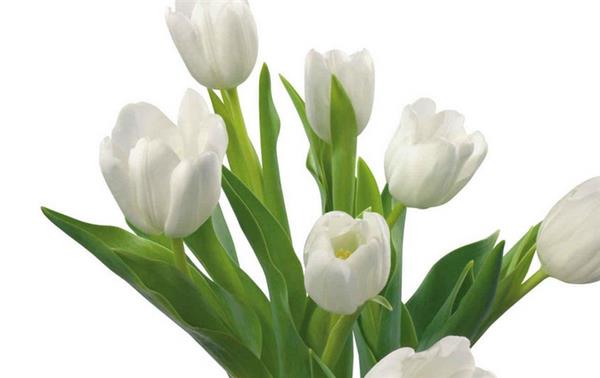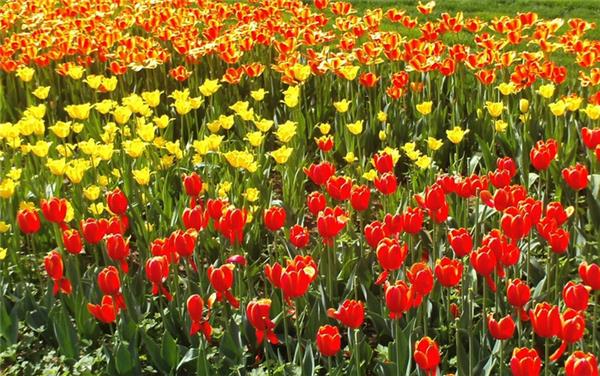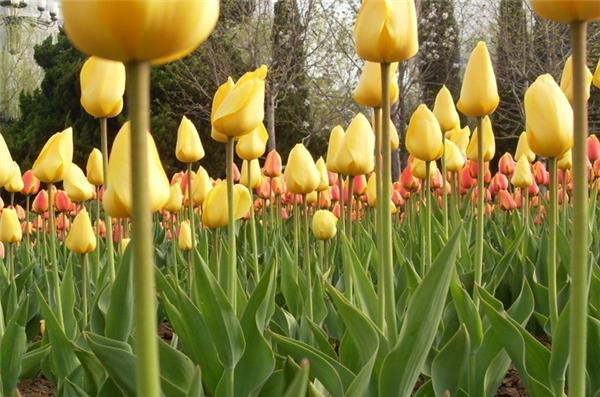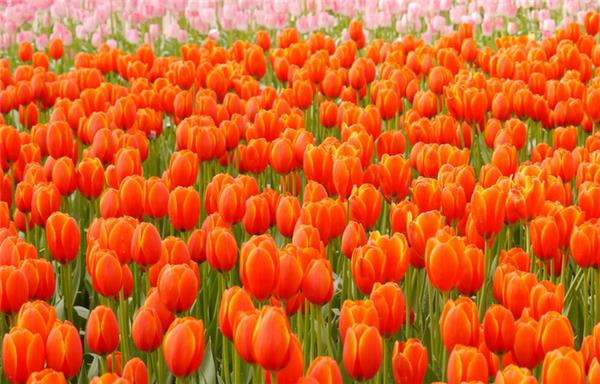[symbolic meaning of tulips] what does tulips mean?
Tulip, the national flower of the Netherlands, is popular for its mystery and nobility, and now it has been transplanted to all parts of the world. Tulip is a kind of flower which is endowed with a lot of love meaning, and its beautiful flowers are also loved by people all over the world. Now let's find out what tulips stand for. And the flower language of tulips and the moral of tulips.

I. the symbolic significance of tulips
Tulips imply elegance, wealth, ability and intelligence. Tulips are love, charity, fame, beauty, blessing, eternity, love and eternal blessing. Tulip, elegant, refined, fresh and meaningful, is a noble and mysterious flower, which was specially planted for the royal aristocracy in the imperial garden of the Ottoman Empire as early as the 17th century. The flowers of tulips are colorful and varied, such as yellow flowers sprinkled with red dots on their petals, called "the blood of the king", and tripping red flowers whose petals roll up each other, called "lovers' kisses".
Red tulips, from loving you, feeling loving you, remembering you from sleep, holding you, taking care of you, you are the love of my life! This is given to your girlfriend, it means that you send her a declaration of love, "Baby I love you", like red tulips, is my baby.
Black tulips represent mystery, nobility, chivalry (or melancholy love). Black has always been mysterious, so the flower language of black tulips represents mystery.
Purple tulips represent noble love, endless love, faithful love. Elegant purple tulips are infatuated and adorable at first sight, just like I met you at the beginning! In terms of flower talk, it is very appropriate to send your wife. Your wife is the goddess in your mind, so you should give her all your love.

Second, the characteristics of tulips
Tulips, also known as lotus, grass musk, belong to the lily family, tulips belong to perennial herbaceous bulbous flowers. Bulb ovate, outer capsule papery, leaves 3 Mel 5, basal, striate to ovate-lanceolate, 10 mi long, 1 mi 8 m wide, flowers large, solitary on top of pedicel, goblet-shaped. Flowers are red, yellow, white, orange, purple and other miscellaneous colors, flowering from March to May.
Tulips are native to Central Asia and the Mediterranean coast. As early as 1258, an Iranian poet mentioned the flower in his poem. It was spread to Western Europe after 1554 and was bred massively. New varieties emerged one after another, and Dutch cultivation was the most popular.
Tulips are bulbous flowers planted in autumn, like the sun, but also quite hardy, can withstand a low temperature of minus 14 degrees Celsius, overwintering under snow like humid and cool climate, not heat-resistant. The pH value of soil is 6.0-7.8. Neutral or slightly acidic soil is better, and the soil that has just planted Compositae plants is not suitable for growing tulips. And avoid stubble. Suitable for wet sandy loam with good drainage; flowers open during the day and closed at night and rainy days.

Third, how to raise tulips
During cultivation, it is easy to be harmed by soil nematodes and Fusarium oxysporum. Attention should be paid to the use of clean cultivated soil and fully mature fertilizers, as well as preventing soil from stagnant water and causing bulbs to be waterlogged and rotten. Making the plant develop healthily is the best measure to prevent the disease. Sometimes there are mottled patterns on the flowering tulips; this is a viral infection, and such diseased plants should be dug up and burned, otherwise they will soon infect other varieties and lose the good quality of the variety.
Family potted tulips should choose a deep tube basin, and the bottom of the pot should be covered with rotten barnyard manure and supplement part of phosphorus and potassium fertilizer as base fertilizer; after bulb planting, it should be placed in a cool or frozen place outdoors, and the pot soil should not be dry or wet until the pot is moved to 10 degrees Celsius in the first 2 months of the flowering period, so that it can sprout and sprout leaves ^ after leaves, it should be placed at 1518 degrees temperature and sufficient sunshine, increase water and fertilizer, it can bloom in New Year's Day and Spring Festival. The specific number of days required varies slightly due to varieties and temperature conditions.

The variety of tulips cultivated in the courtyard can be arranged into special flower beds, or arranged with other autumn bulbs, or planted in the grass, or can be planted in pots to enjoy flowers. Its flower branches and asparagus are the most popular cut flowers in spring for indoor decoration, which can add cheerfulness and warm atmosphere.
Related
- Wuhan Hospital Iron Tree Blooming Result Was Instantly Frightened by the Gardener Master
- Which variety of camellia is the most fragrant and best? Which one do you like best?
- What is the small blue coat, the breeding methods and matters needing attention of the succulent plant
- Dormancy time and maintenance management of succulent plants during dormancy
- Minas succulent how to raise, Minas succulent plant pictures
- What are the varieties of winter succulent plants
- How to raise succulent plants in twelve rolls? let's take a look at some experience of breeding twelve rolls.
- Attention should be paid to water control for succulent plants during dormant period (winter and summer)
- Watering experience of twelve rolls of succulent plants
- Techniques for fertilizing succulent plants. An article will let you know how to fertilize succulent plants.



